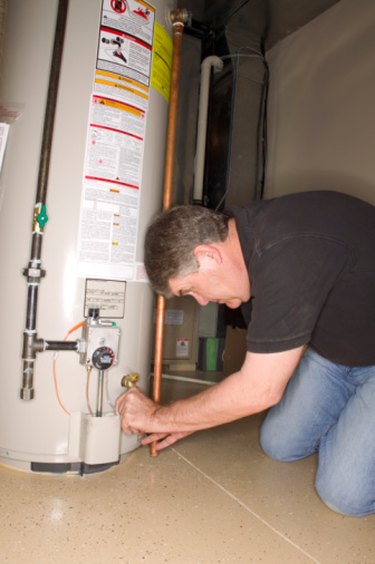Things You'll Need
Vacuum cleaner
Dust mask
Goggles
Duct cleaning tool

The venting on gas water heaters carries away unburned gas fumes and provides a place for heat to escape. These vents are typically constructed out of duct material similar to that found in attics and bathrooms. You should clean the venting on gas water heaters whenever the vents begin to appear clogged. A buildup of leaves or other materials inside the vent could catch fire.
Step 1
Turn off the gas supply for the gas water heater. The gas supply valve is usually located on the gas supply line leading to the heater. Rotate the knob in the direction indicated to cut the gas supply. When the gas is properly turned off, the pilot light will extinguish. Check the bottom of the heater for the pilot light to see if you've cut the gas correctly or not.
Video of the Day
Step 2
Put on goggles and a dust mask, especially if you are allergic to dust and pollens.
Step 3
Connect an extension to your vacuum cleaner. Plug in the vacuum cleaner in a location that is close to the gas water heater vent.
Step 4
Check the vent hood above the heater to see if can be removed. This will allow you to reach into the vent further with the vacuum cleaner extension.
Step 5
Insert the vacuum hose and extension up into the venting above the heater. Vacuum up as much as you can from that location.
Step 6
Use a tool such as a duct cleaner to reach parts of the vent that the extension hose doesn't reach. Rub the soft end of the tool around the inside of the vent to pick up all the dust and pollen particles.
Step 7
Replace the vent hood, if you removed it. Restore the gas supply. Relight the pilot light.
Warning
Always use caution when working around gas. If in doubt, consult a professional
Video of the Day